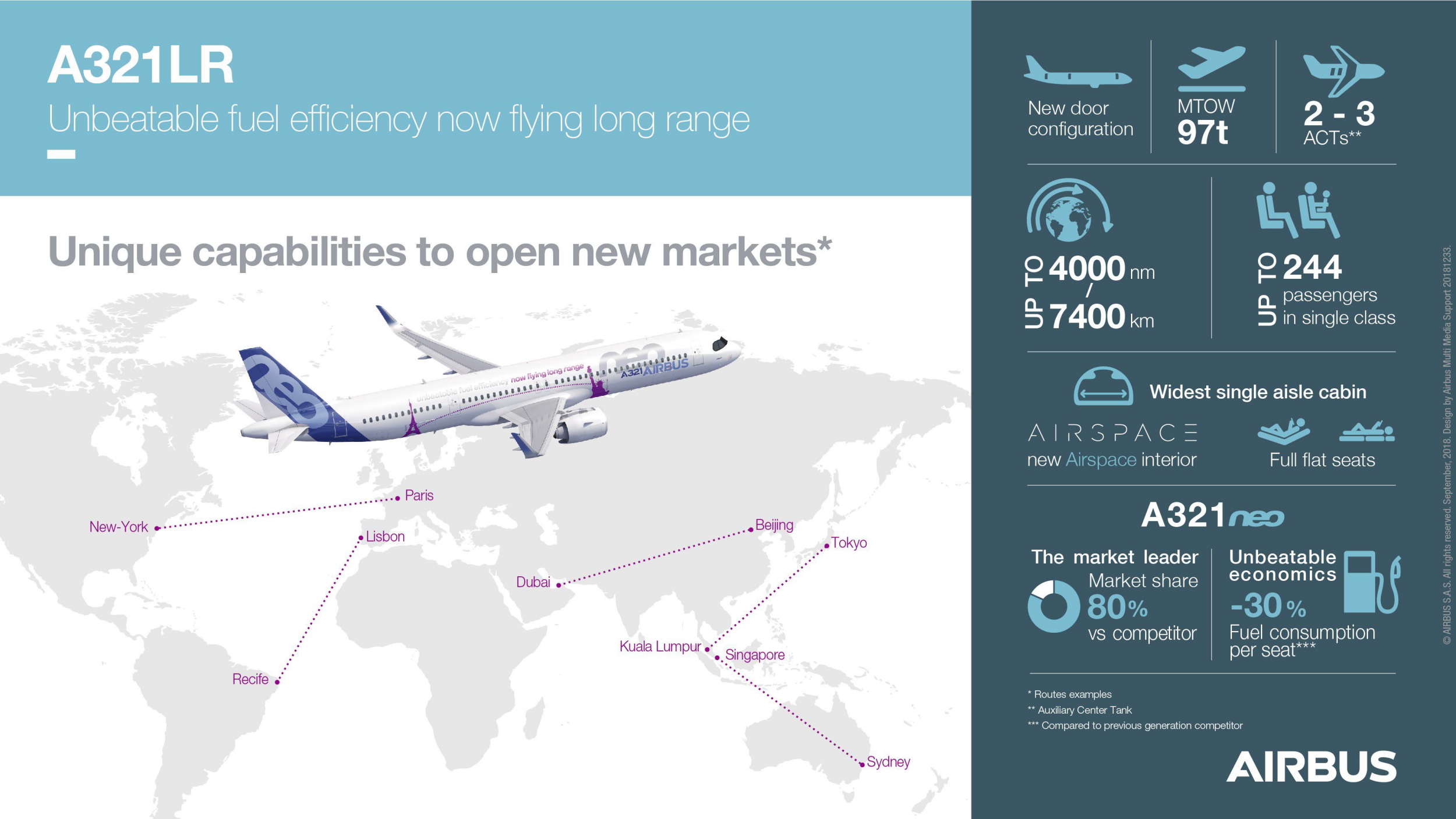|
The Airbus A321LR (Long Range) has received
joint EASA and FAA approval to operate with up to three underfloor
Additional Centre Tanks (ACTs), including for ETOPS operation.
This latest milestone is one of various A321neo
capability options which when combined will allow the A321LR version
to fly up to 4,000nm with 206 passengers with extra fuel stored in
three ACTs, including on ETOPS routes.
Moreover, the ETOPS authorisation enables
up to 180 minutes single-engine diversion time, which is
sufficient for performing any transatlantic route.

The A321LR�s certification includes: (a)
approval of the �major change� to install up to three optional
ACTs in the A321neo � with their associated new fuel management
systems and lower-fuselage structural reinforcements; and (b) the
approval of the A321neo�s �Airbus Cabin Flex� (ACF) option which
incorporates a modified fuselage structure with new door
arrangements together with a higher Maximum Take-Off Weight (MTOW)
capability of up to 97 metric tonnes.
It should be noted that only A321neos which have the new ACF structure can offer the 97t MTOW
and the ability to install three ACTs. Previously, the A321 Family
could accommodate up to two ACTs.
While the ACF configuration
will become standard for all new delivered A321neos from around
2020, the 97t MTOW capability and the ability to carry up to three
ACTs will be options.
For the ACTs, customers would specify prior
to aircraft manufacture whether the aircraft is to be equipped
with an expanded fuel management system as well as the necessary
structural reinforcements to secure the underfloor ACTs.
The
ability to add or remove ACTs, combined with the Airbus Cabin
Flex, the 97t MTOW capability and the EASA/FAA approval to use the
ACTs with ETOPS, together confer unprecedented airline flexibility
for cabin layouts, seating density, cargo payload, fuel-capacity
and mission routing.
|
Headlines: |
|
See latest
HD Video
Interviews,
Podcasts
and other
news regarding:
Airbus,
FAA,
EASA.
|

